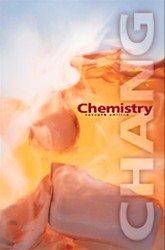 |  Chemistry, 7/e Raymond Chang,
Williams College
Quantum Theory and the Electronic Structure of Atoms
Internet Exerciseshttp://theory.uwinnipeg.ca/physics/quant/node3.html
(http://theory.uwinnipeg.ca/physics/quant/node3.html)
- The photoelectric effect, developed by Albert
Einstein, is a phenomenon in which electrons are ejected from the surface
of certain metals in response to being exposed to light of at least a certain
minimum frequency. The website at http://theory.uwinnipeg.ca/physics/quant/node3.html
gives a basic representation of the apparatus that produces a photoelectric
current. Sketch the appartus shown, and then answer the following, using the
concepts provided at this site.
- Calculate the energy in joules of a photon
with a wavelength of 635 nm.
|
 |  |  | Study the movie and images
(http://squier.ucsd.edu/education/gchem/qmbasics/qmexplreact.html)
- Quantum chemistry is closely knit to biological
processes, such as the transformation of retinal in the eye, which allows
us to see. Study the movie and images at http://www-wilson.ucsd.edu/education/pchem/qm/viselectronstate.html,
provided by the Wilson Group, and answer the following.
- What happens to electrons when they are
irradiated with light?
- Why does retinal undergo a conformational
change when it is exposed to light?
- How does this allow us to see?
|
|



 2002 McGraw-Hill Higher Education
2002 McGraw-Hill Higher Education